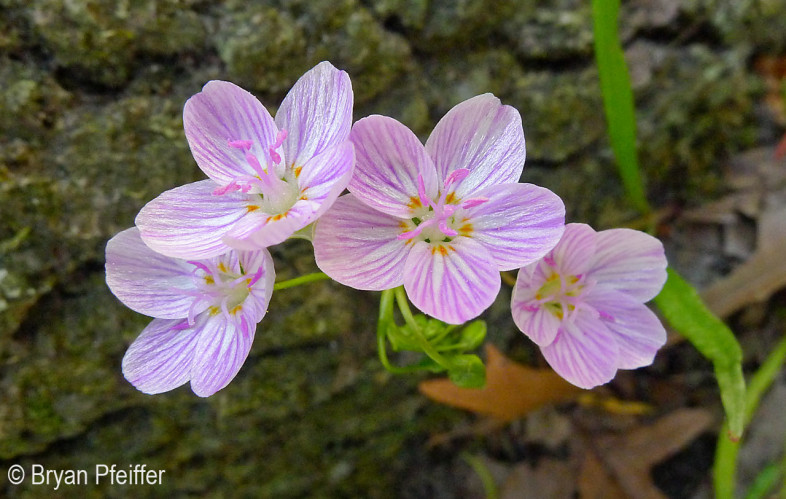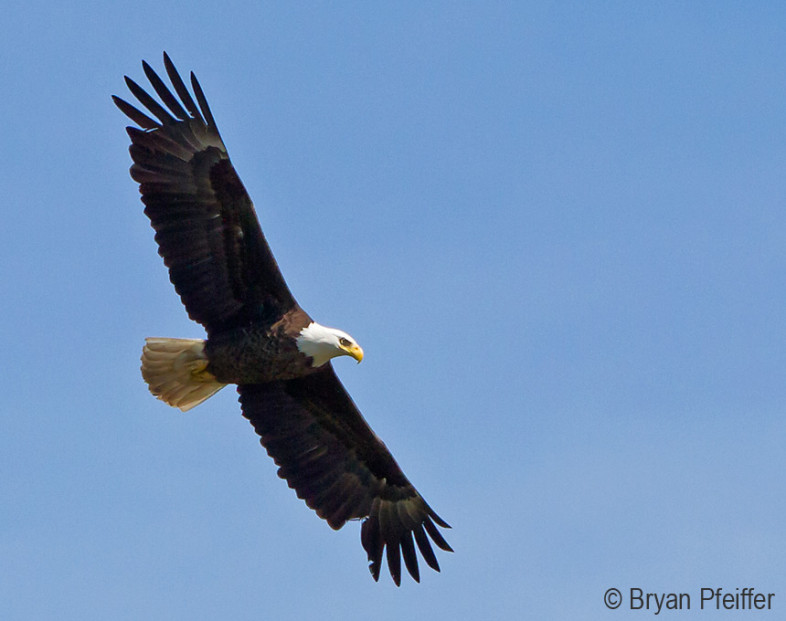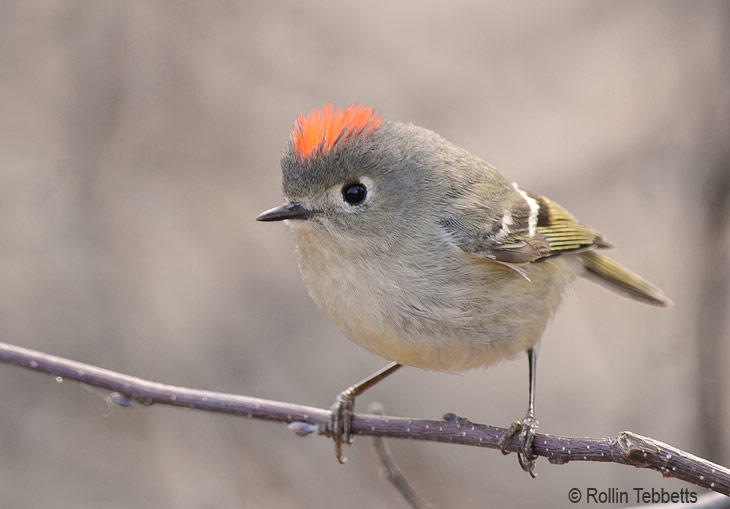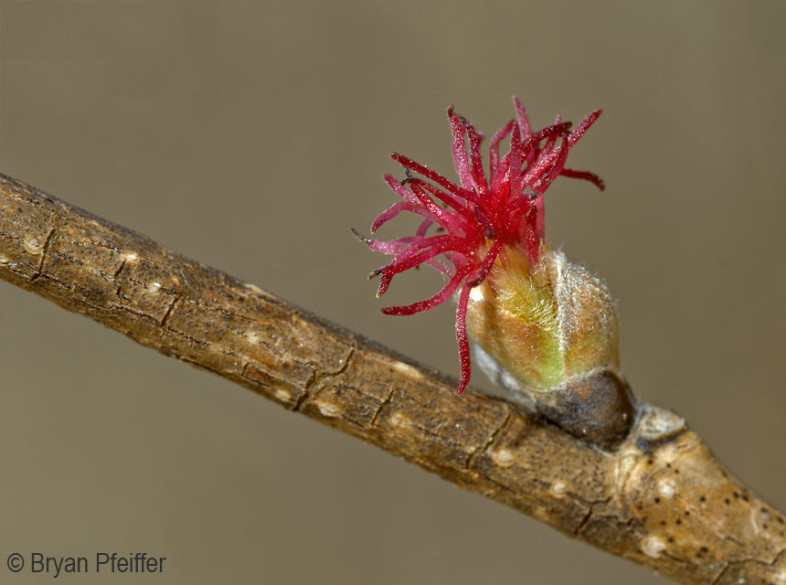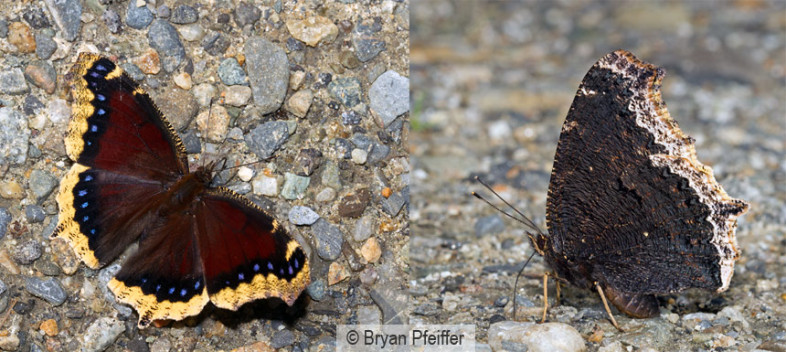April is the cruelest month, breeding
Lilacs out of the dead land, mixing
Memory and desire, stirring
Dull roots with spring rain.
Winter kept us warm, covering
Earth in forgetful snow, feeding
A little life with dried tubers.
Opening lines of The Waste Land by T.S. Eliot
By Bryan Pfeiffer and Kent McFarland
April is the carnal month. The forest returns with cold desire. Blades of wild leeks slice through the soggy, brown remains of autumn to release sweet-onion perfume. A Ruby-crowned Kinglet, his head ablaze, sings a hurried tee-tee-tee-tee, tew-tew-tew-tu-tu-tu-tu, teedle-dee! teedle-dee! teedle-dee! Spotted Salamanders, black with yellow polka-dots, slimy slithering clowns, crawl by night to forest pools for their vernal orgy. The spring beauties, bolts of pink lightning on soft petals, meditate in sugarwoods. April leaves none of our senses void.
T. S. Eliot’s April is a month of physical life and spiritual death. So in addition to our own hack-poetry above, here below is a visual and spiritually rich Field Guide to April.
But first, April’s Hot Birding News: Ian Worely discovered a Pink-footed Goose in the flooded fields west of Shard Villa Road in Middlebury. The location is a pull-off that allows for viewing of an expansive cornfield/wetland. Ian also reports a Cackling Goose from the same location. Keep an eye on VTBIRD post for updates.
Bald Eagle Alert
Meanwhile, Bald Eagles are gathering at the fertile intersection of ice and water in Vermont’s Champlain Lowlands. VCE Research Associate Bryan Pfeiffer and Ian report on Bryan’s blog how opportunistic eagles — sometimes two dozen or so — gather among dead, frozen fish on, appropriately, Dead Creek in the town of Addison. Also note that we’re enjoying the usual surge of April’s migrants, including Snow Geese, Pied-billed Grebe, Great Blue Heron, Turkey Vulture, Black Vulture, Killdeer, American Woodcock, Caspian Tern, Tree Swallow, Marsh Wren, Eastern Bluebird, Chipping Sparrow, and, of course lots of blackbirds, including Rusty Blackbird.
The Kinglet’s Fireworks
Any day now, Ruby-crowned Kinglets will also arrive. Most of the time, a male Ruby-crowned Kinglet is a fraud with feathers. When he appears, neither ruby nor kingly, you may wonder how he got his name. Pale green and gray, small and fleeting, he is among the plainest birds in the woods. You may even turn your binoculars instead toward the warbler or woodpecker. But resist the urge to complain or pass him by. Keep watching the kinglet. The reward will be an explosion of feathers that will make your heart pound and your knees wobble. Read Bryan’s perennial tribute to kinglets.
Hazelnut Fireworks
Not to be outdone in this burst of crimson is Beaked Hazelnut. If you walk too fast, splattering mud along the trail or searching for the season’s first Hermit Thrush, you will miss these fireworks. Slow your pace, watch for a gray shrub not much taller than you. The drooping catkins are your first hint. But cast a careful gaze for that April explosion. Bryan explains.
Carnal and Vernal in the Pools
The next act in this vernal drama happens with the next warm rains of April. Vernal pools come alive with mating amphibians. Stars on this stage here in Vermont include Spotted Salamander, Wood Frog and Spring Peepers. Kent reports on how Wood Frogs are all but returning from the dead. Bryan offers a lively account of Spotted Salamanders in the very first dispatch in his What’s This? nature mystery challenge (those odd white things on a twig pictured above).
“Mourning” in America
And, finally, yes, we know that we promised you Mourning Cloaks last month. We suspect some did indeed fly in March. If so, we didn’t hear about them in Vermont on e-Butterfly.org. But, on April 3rd, the first warm day this month, Mourning Cloaks were indeed reported from Grand Isle and Windsor, Vermont. Barring some unexpected return of the Pleistocene this month, watch for Mourning Cloaks in flight across the state soon. In the meantime, here’s Kent’s essay on the Butterflies of Winter.
